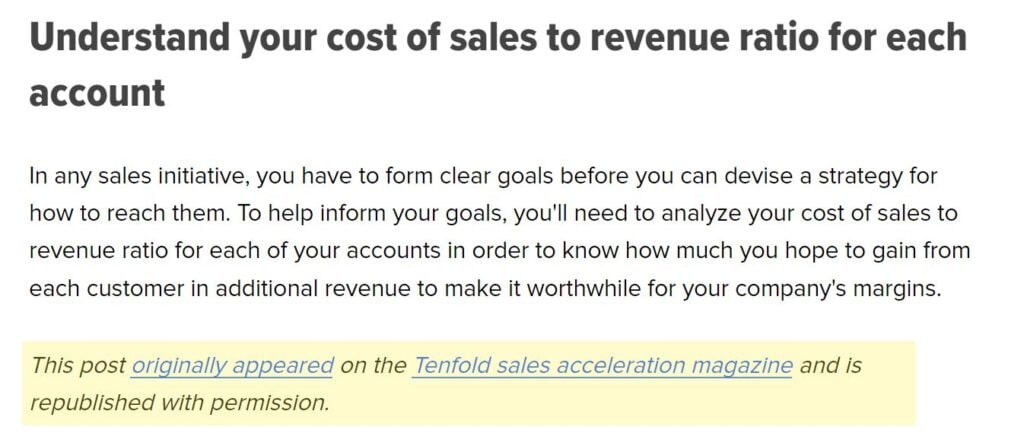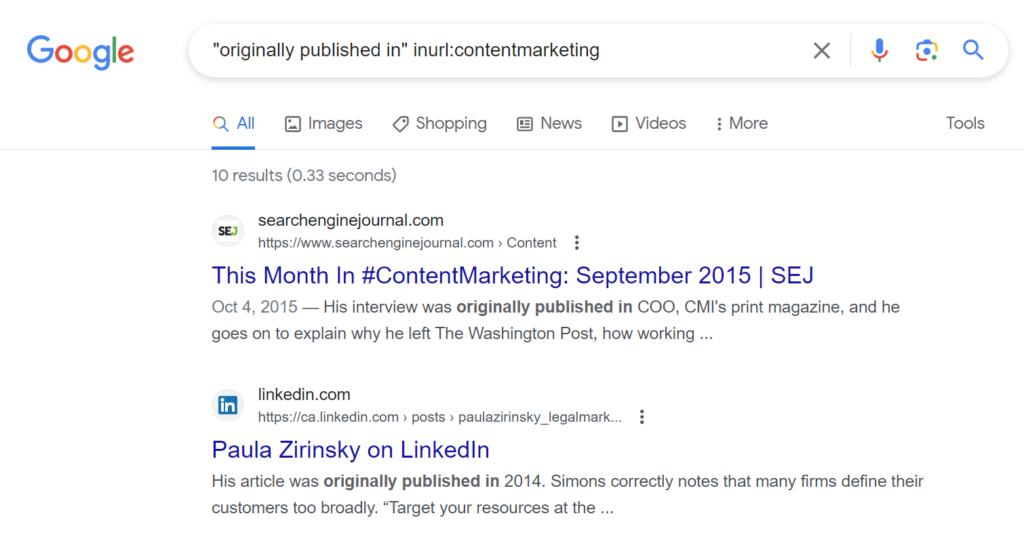Quick question: are you syndicating your content? Content syndication may have slipped off the radar for some marketers, but in a world that consumes eight hours of digital media per day, it's more relevant than ever.
The way we consume digital content has exploded over the last decade—from social media and email to websites and more. Search engine optimization, short-form video content, artificial intelligence… every year there’s a promising new digital marketing strategy that demands more content.
In many cases, content marketing teams spend as much time trying to appease our Google overlords as they do trying to impress their own customers. What’s our search ranking? How much traffic did we generate? More, more, more.
Worse still, is the realization that after all that time, effort and investment you’re still struggling to drive traffic and build brand awareness. But what if there was a way to extend the life of the content you’re creating, improve SEO, and attract more attention from your target audience?
Content syndication provides a solution to all of the above, and more. In fact, 30% of B2B experts see it as their most effective lead generation strategy, and I’ve seen the proof in the pudding. Take, for example, RezRecover—a hotel SaaS start-up I’ve had the pleasure of working with.
During their initial product launch, RezRecover leveraged content syndication to generate buzz in a new industry, advancing to one of the most recommended tools on Hotel Tech Report, one of their syndication partners.
Today, let’s revisit content syndication, and explore how your business can tap into a plethora of benefits and extend the life of your content in 2023.
What Is B2B Content Syndication?
Content syndication refers to republishing the same piece of B2B content—whether a video, infographic, blog article or thought leadership piece—on one or many different websites and third-party platforms.
Think of it like this: Your company's blog features valuable articles. You reach out to a popular digital publication in your industry, they agree to share your content on their website, and you tap into their well-suited audience, creating a win-win scenario.
To avoid confusion, it’s necessary to note that content syndication is not the same as guest blogging. Content syndication involves reusing previously published content, as opposed to creating new, original content.

B2B Benefits Of Content Syndication
- Boost Your Blog Subscribers: B2B content syndication can supercharge your blog's reach. When your content gets shared on various platforms, it's like an open invitation to new subscribers. More eyeballs on your content means more potential fans of your blog.
- Increase Website Traffic: Let's face it, we all want more traffic on our website. Content syndication can be your traffic booster. We can see this with sites like Stacker.com, who use content syndication to drive web traffic – in some cases, as much as 500% in 16 months.
- Demand Generation: Content syndication isn't just about attracting curious clicks; it's about generating demand. Your content can stir interest, spark conversations, and nurture leads into hot prospects, in some cases generating up to $10million in revenue, as achieved by Best Self.
- Amplify Brand Awareness: Content syndication extends your brand's reach far and wide. Why limit yourself to posting content on your site, when you can post to many? It's like shouting your message from the rooftops, but in a more strategic and less disruptive way.
- Improve SEO with Backlinks: SEO wizards love backlinks, and content syndication is a treasure chest of link opportunities. Data from Stacker Studio demonstrates the impact content syndication can have on SEO – a 23% increase in organic traffic and a 62% increase in search rankings.
Content Syndication And SEO
As mentioned above, content syndication can play an important role in search engine optimization (SEO). While we love the potential of increasing backlinks, it is important to understand the impact content syndication may have on SEO.
Duplicate Content and Canonical Links
Google does not like duplicate content. The good news is that syndicated content is not considered duplicate content… when done right. It is crucial that any piece of content you syndicate to a third party is clearly marked as such, for both readers and search engines.
The best way to ensure your content is not flagged as a duplicate, is to include a link back to the original article (as seen in the image example above) and ask your content syndication partner to include a canonical link. A canonical link is an element of HTML code that indicates the preferred version of a webpage when multiple versions exist.
Cannibalization of Traffic
Another important aspect to consider when syndicating content is that the syndicated piece may end up “outranking” your original content. This is known as cannibalized traffic.
While content syndication allows you to place your content in front of a larger audience, in some cases, this may result in driving organic traffic away from the original source.
For example, let’s say this guide was syndicated to a much larger publication, like Forbes. There is a risk that the syndicated piece might outrank the original, potentially leading to cannibalized traffic. This can happen if the syndicating website has a higher domain authority or if the search engines prioritize the syndicated version.
Unfortunately, this is just one of the risks of content syndication, as there’s no surefire way to avoid this from happening. Again, this is why canonical tags are so important.
Types Of Content Syndication
Free Content Syndication
It is possible to syndicate your content for little financial cost, often even free, by establishing partnerships with larger publications or third-party sites. When it comes to syndicating your content for free, there are several approaches you can take:
1. Republishing to a larger third-party site or digital publication
2. Syndicate to smaller, niche websites to target a very specific audience
3. Guest post on larger sites, and syndicate the content back to your own website
4. Optimize your website to get picked up by sites that syndicate content
Free content syndication is a fantastic way to extend the life of your content, reach a wider audience and build brand awareness, all without significant investment. However, in exchange for republishing your content for free, you give up much of your control over when, how and where your content is published.
Paid Content Syndication
If you have a specific vision for how you would like your content to be shared on third-party websites, you can go the route of paid content syndication. Paid syndication grants you greater control and predictability in where and how your content is distributed.
Options for paid content syndication include negotiating with content syndication platforms directly, though this may come with significant cost, or using tools like Taboola or Outbrain.
These tools function similarly to other forms of PPC advertising, allowing you to set a budget, cost-per-click and target audience. These tools provide an affordable alternative to place your content on large websites they may otherwise have been financially out of reach.

Effective B2B Content Syndication Strategies
Now let’s get into how you can approach content syndication in 2023.
Start with a Content Audit
To start off, conduct a thorough content audit in order to identify your best performing pieces of content. Syndicating poor quality content will not magically make it better—you must ensure everything you syndicate is high-quality, or risk damaging public perception of your brand.
To begin your content audit, follow this approach:
- Inventory and Categorization:
- Compile a comprehensive list of all content types.
- Organize content into logical categories or topics.
- Relevance and Quality Assessment:
- Evaluate the relevance of each piece of content for syndication objectives.
- Assess content quality in terms of accuracy, clarity, and consistency.
- SEO and Performance Analysis:
- Conduct keyword analysis and assess content performance metrics.
- Identify opportunities for SEO optimization.
- Content Gap Analysis:
- Identify gaps in content coverage and areas for improvement.
- Pinpoint topics where additional content is needed.
- Documentation and Implementation:
- Document findings and create a comprehensive report.
- Develop and implement a plan for content updates, removals, and improvements.
Combine Content Syndication with Account-Based Marketing (ABM)
In recent years, many B2B companies have switched to Account-Based Marketing (ABM) methods to improve their lead generation. In fact, as many as 87% of marketers say their ABM strategies are outperforming their other marketing investments.
To make the most out of syndicating your content, consider folding syndication into an account-based approach. Hyper-personalizing each piece of content you share online, whether on your site or a third-party, ensures every lead generated is a qualified match.
Again, this is why a content audit is a necessary first step. Auditing the performance of your content pinpoints the type of content your audience enjoys the most.
Leverage Emerging Content Platforms
Content syndication isn't limited to traditional methods. Keep an eye on emerging content platforms and social networks that can help you reach your target audience.
For example, in 2023, platforms like TikTok, Clubhouse, or new niche-specific forums might present untapped syndication opportunities. The key is to adapt your content to these platforms and engage with the audience in a way that feels native to the platform.
Guest Post First, Syndicate Later
Establishing strong relationships with syndication networks is an important part of the syndication process. If you’re approaching syndication for the first time, consider offering your services as a guest blogger to warm up the partnership.
Though guest blogging requires more resources, like pulling a content creator into the mix, it serves as a way to prove your team can deliver great content. New syndication partners may be more open to future collaborations if they know you can produce high-quality, relevant content.
Don’t forget: strong relationships might also result in referrals to other networks, helping you spread your content even further across the web.
Implement Advanced Analytics and Tracking
In 2023, the importance of data-driven decision-making continues to grow. Implement advanced analytics and tracking tools to gain insights into how your syndicated content is performing.
Monitor key metrics like click-through rates, engagement, and conversion rates. This data will enable you to refine your strategy, allocate resources effectively, and focus on what works best for your audience.
Looking for the best analytics reporting tools? Cruise through our list of the 12 Best Marketing Analytics Tools in 2023.
How To Find Content Syndication Partners
Discovering the right content syndication partners is a critical component of your syndication efforts. To locate these partners, several strategies can be employed:
- Start with a Google search! Research industry-specific publications, blogs, and websites that frequently feature content related to your niche.
- To zero-in on websites that already syndicate content, tailor your Google search around terms like “originally appeared in” or “published with permission from.”
- Use tools like Ahrefs, BuzzSumo, or SEMRush to check a website’s latest backlinks or find high ranking sites under specific keywords – these sites could prove to be beneficial syndication partners.
- Network through LinkedIn. Reach out to Editors and Content Marketing Managers to build relationships and open the door for syndication opportunities.
- Additionally, considering partnerships with content marketing agencies and syndication networks can expand your options. There’s a list of content syndication services, websites and platforms you can reference below!

Content Syndication Services, Websites and Platforms
These platforms and publications are recognized for their content syndication opportunities and can provide a wider reach for your content:
- Outbrain
- Taboola
- Zemanta
- Revcontent
- Adblade
- Shareaholic
- Content.ad
- Forbes
- Business2Community
- Entrepreneur
- The Huffington Post
- Inc.com
- Business Insider
- Mashable
- TechCrunch
Put Your Content To Work!
Content creation has become an ever-increasing demand in the digital age, with a perpetual need for fresh and engaging content across various platforms. However, the challenge lies in maximizing the value and reach of the content produced.
By revisiting content syndication, we've explored how this strategy can extend the life of your content and provide numerous benefits, such as improving SEO, boosting blog subscribers, or increasing website traffic.
As content creators, marketers, and business professionals, it's crucial to harness the full potential of content syndication to meet the ever-growing demands of the digital landscape.
To take the next step in your content journey, consider exploring another informative article on our blog. Or, sign up for the The CMO newsletter if you’d rather have our content delivered straight to your inbox.


